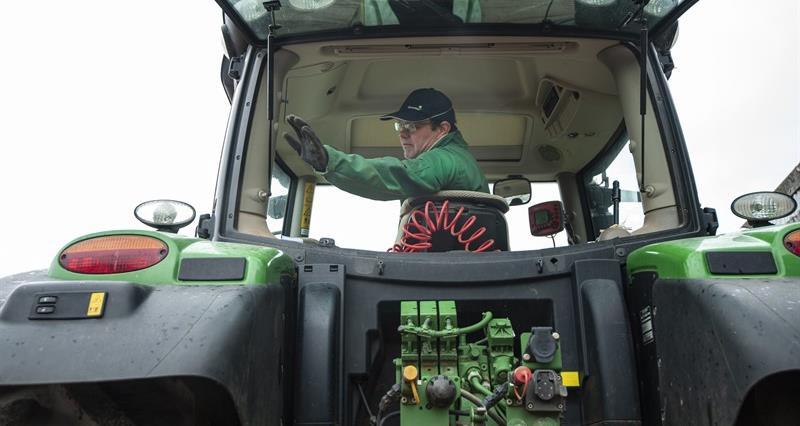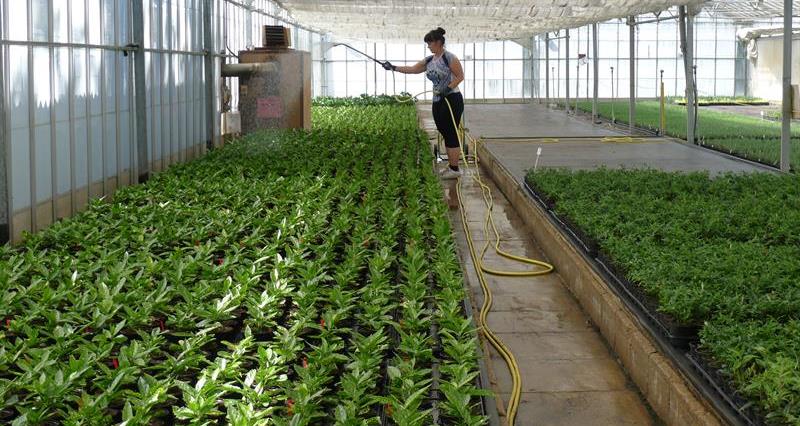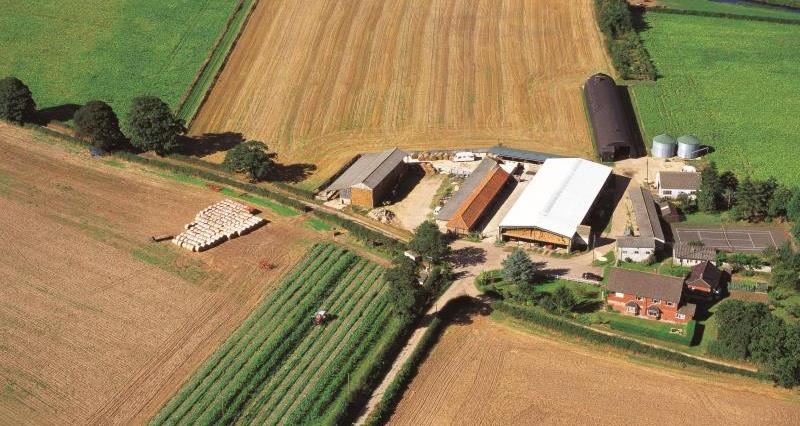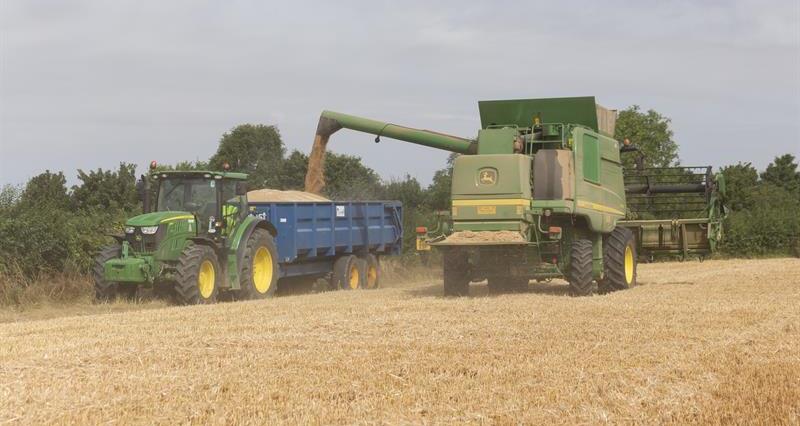Three themes to apply for
There are three grant themes to apply for individually under the FETF 2025 offer:
Same name but look at the detail – some items and specifications in the 2025 FETF lists have changed from those in the 2024 offer and some equipment may no longer be eligible. Refer only to the 2025 FETF lists; this will set out the scoring protocols in more detail.
Each of these themes has a separate list of eligible items you can apply for funding towards.
You can only submit one grant funding agreement for each grant theme in 2025.
If you want to apply for more than one grant theme, you will need to apply under each relevant application for the relevant items.
Basis of funding
This grant offers funding to contribute to a specific list of equipment to increase productivity, boost environmental sustainability, better manage slurry and improve animal health and welfare. All eligible items bought under this scheme must meet the minimum specification set out in the scheme information. All items must be new or ex-display, there is a list of what is not considered new or ex-display in the guidance.
You can buy an item with a higher specification, but you cannot buy items that do not meet the minimum specification.
You may apply for an item that you’ve applied for under previous FETF grants. The RPA will ask you to explain why you need this item again.
You must keep items that have been funded by FETF grants for five years from the date your claim was paid.
Competitive grants
The FETF 2025 grant is competitive, and you may not get a grant offer after applying for one. The success of an application(s) is dependent on the:
- score an application achieves
- number and value of applications the RPA receives.
The RPA will allocate funding after all applications have been received and scored. The list of eligible items sets out its expected score for each item. Funding for each of the three grant themes will be allocated starting with the highest scoring applications until all funding is allocated. This will then set the minimum score that an application must meet to receive funding for each theme (also known as the minimum threshold).
If your application falls below the scoring threshold and is unsuccessful for an application window, the RPA will reject it for this 2025 offer.
Funding available
The 2025 FETF offer has a budget of £46.7 million, which is split between £30m for the productivity and slurry grant themes and £16.7m for the animal health and welfare grant theme.
You can apply for grant contributions of 40% or 50% towards either:
- the average cost of the item as listed,
- or the actual cost paid if an item costs less than the average cost listed.
If your application is successful, you’ll receive a grant of:
- A minimum of £1,000 and a maximum of £25,000 towards productivity items.
- A minimum of £1,000 and a maximum of £25,000 towards slurry items.
- A minimum of £1,000 and a maximum of £25,000 towards animal health and welfare items.
This scheme is less generous compared to the 2024 offer.
The grant contribution does not cover the total cost of each item. It’s your responsibility to fund the remaining cost. The RPA will check financial viability and will use a tool called ‘spotlight’ to assess this and may get in contact as a result. Spotlight is the government’s automated online tool to support grant management. The evidence provided there will be used to assess the current financial viability of the business. In some cases the RPA may ask for an accountant’s certificate or equivalent document.
Who is eligible?
The FETF 2025 offer is open to farmers, horticulturists and forestry owners. It is also open to contractors carrying out services to farmers, horticulturalists or forestry owners.
Those wishing to apply need to be registered with the RPA’s Rural Payments service and have an SBI (Single Business Identifier). Please read the guidance on the use of SBI numbers.
If you were successful and received funding in FETF 2024, you can still apply for FETF 2025.
You can apply for any theme or all three, for any of the eligible items that best suit your business.
Eligible items
There are more than 160 eligible items of equipment under FETF 2025 split across:
- 17 items of slurry equipment.
- 66 items of equipment for improving productivity.
- More than 100 items to promote animal health and welfare.
If successful with an FETF application and having agreed to a grant funding agreement offer, items must be paid for in full before a claim can be made. All grant purchases must be through a supplier or manufacturer; these cannot be linked to your business, and they cannot be home built equipment.
Grants are awarded through the FETF based on the overall score of your application per grant.
These scores can be found on the individual annexes for each theme below:
- GOV.UK | Productivity items and specifications.
- GOV.UK | Slurry items and specifications.
- GOV.UK | Animal health and welfare items.
As with previous schemes, where a theme is oversubscribed, the RPA will allocate funding to those items (or the average for a combination of items) applied for with the highest score first.
Improving productivity items
Grants for items under the improving productivity list are available for the following categories:
- Arable
- Forestry
- General
- Horticulture
- Livestock
- Resource and energy management
- Water and irrigation management
The productivity offer now contains 66 items, covering a variety of sectors and aims to improve your business productivity.
Applications for productivity items are scored on:
- productivity benefit
- environmental benefit
- level of adoption by the industry.
Each item is scored individually; for example a direct drill (FETF44) is scored at 57 out of 100, while a retrofitted steering assist system (FETF47) has a score of 49 out of 100. Alongside this score is a percentage, usually between 40-50% which is the proportion of grant funding available to that item.
For the items in this example, the direct drill will be paid at a 50% rate, while the steering assist system would be paid at a 40% rate.
Slurry management
Grants for items on the slurry management list are available to farmers or contractors in the following sectors:
- slurry collection and storage
- slurry testing
- slurry application.
There are now 17 items available for slurry management included in the 2025 offer.
Applications for slurry items are scored on:
- improving slurry management
- environmental benefit
- level of adoption by the industry.
Items under the slurry management theme are scored out of 100 and will be funded at a 50% rate. For example, a mobile slurry separator (FETF501) is scored at 65 out of 100 and is paid at a 50% rate.
Another option is the real time inline nutrient analysis of slurry (FETF29) which has a score of 78 out of 100. An application for these two items would score 72 out of 100.
For both productivity and slurry grant theme applications, the RPA will give your application a score by:
- Adding together the scores for each item in your application. If you apply for more than one of the same item, the item will only be scored once.
- Dividing this number by the number of items in your application. If you apply for more than one of the same item, the item will only be counted once.
Productivity and slurry grant theme score uplifts
If an applicant has received less than £10,000 from any previous FETF round, then their score can be increased by 25%. This is a new feature of the 2025 offer. This does not include any funding received for the animal health and welfare themes from the 2023 and 2024 rounds of the FETF, but does include FETF round 1 2022 (any items), FETF 2023 (productivity and slurry items) and FETF 2024 (productivity and slurry items).
Applicants will need to tell the RPA at the time of application whether they want to apply this uplift. The RPA will then check their funding records to verify any information provided to them.
Animal health and welfare
The Animal health and welfare grant is only available if you farm any of the following:
- beef cattle
- dairy cattle
- sheep
- pigs
- poultry – laying chickens and broiler chickens (for both including rearing and breeding farms).
The scoring approach and calculations for animal health and welfare items works differently compared to the two other grant themes. This theme works by dividing the beneficial score for the chosen item by their cost to calculate the value for money of an individual agreement.
For example, a mobile sheep handling system (FETF69) has a score of 2,030 and a grant contribution of £4,880, giving this item a score of 0.42.
By comparison, an EID panel reader for sheep (FETF74) has a score of 1,910 and a grant contribution of £792 giving it a score of 2.4. As with both other themes, it will be important to consider the available equipment and ensure the options are suited to the needs of your farm and contribute to the grant aims.
For animal health and welfare items, the RPA and Defra recommend seeking the advice of a vet. This can be used to increase the strength of your application, meaning you have a higher chance of success.
The RPA will need the vet’s details, the date of the discussion and permission to contact them when you apply.
The advice must relate to your application and be received after 1 January 2025, but before you submit your application. You can receive this advice in several ways, including by phone, email, or as part of a vet visit.
This will increase your animal health and welfare grant theme application’s value by 20%.
Which items are not eligible?
If the equipment you want is not listed, or does not meet the minimum specification, it is not eligible for this grant.
Only brand new or ex-display items can be funded through the FETF. Ex-demo, second hand and ‘try before you buy’ items are not eligible for this grant. Part exchange, hire purchase or lease items will also not be available under this grant.
It is important to read the FETF 25 specifications carefully, as some may have changed since FETF 24 as the entire grant offering has been reviewed.
Key deadlines
Applying
The FETF 2025 offer was available through a single application window in 2025.
This application window opened on 29 May and closed on 10 July 2025. This was for all three grant themes.
When the application window is open, applicants will need to use the RPA’s Farming Investment Fund application service to apply for FETF grants. You will need to register for the service to apply.
Take a look at the guidance for how to apply now and especially the availability of items and how deposits work if you choose that approach, and check that you are correctly registered with the RPA.
An application can be saved and changes made to it before it is submitted. However, you cannot change your application after you’ve submitted it. An application can be withdrawn but if you withdraw your application after you submit it, you cannot submit another application for the same grant theme.
Claiming
The RPA has said the claim submission deadlines for FETF 2025 will be midday on 31 March 2026 for those successful applicants who receive a GFA (Grant Funding Agreement).
You’ll need to submit a separate claim for each GFA after you’ve paid for and received all the items in that GFA.
Read the guidance carefully on what to do if your application(s) are successful.



